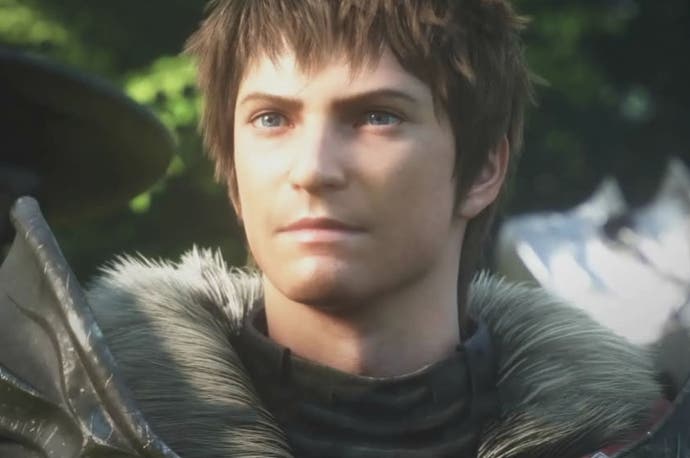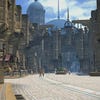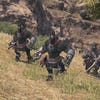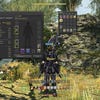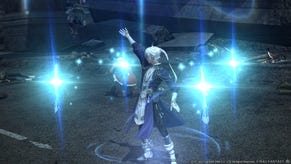Face-Off: Final Fantasy 14
A realm reborn - but has Square's MMO rid itself of its demons?
Final Fantasy 14's initial launch was something of a disaster for Square Enix, temporarily tarnishing both a much-loved brand and the reputation of its developers with a product that felt unfocused and incomplete. Rushed out after an unusually short beta period where only a tiny part of the game was available for players to test (the promised PlayStation 3 beta test never materialised at all), the final release was plagued by game-breaking bugs, a convoluted menu system unsuited to modern MMORPGs, questionable design choices that made the experience frustrating to play, and an unoptimised graphics engine that led to poor performance on a wide range of PCs.??
But despite these glaring criticisms Square Enix still hoped that the game would be successful based on the Final Fantasy name, and that fans would accept some of these issues while patches were developed to address them. But this wasn't the case, with a ferocious backlash against the game that saw players deserting it in their droves. This saw the eventual decision to discontinue the title and rework it into a brand new game, acting as a reboot and sequel to the events of Final Fantasy 14.
Known internally as Final Fantasy 14 Version 2.0, this mammoth undertaking saw a new game engine developed for the title, with reworked graphical sub-systems, more traditional MMO gameplay mechanics, an improved user interface, and better thought-out quests making up the bulk of the changes.? The end result of this extensive redesign is an experience that is far more polished and enjoyable to play than the original release, with none of the glaring issues which plagued the previous game.
After a somewhat shaky start that saw many players unable to log into the game due to the service being overwhelmed with traffic, more servers were brought online and these problems now appear to have subsided. But how well does Final Fantasy 14 Online: A Realm Reborn translate to the PlayStation 3? Does the new engine create a smooth and playable environment on Sony's system? And how well do the revised gameplay mechanics work within the restrictions of using a Dual Shock 3 controller instead of the more flexible mouse and keyboard set-up on the PC??
Let's start by taking a look at the game with our 720p head-to-head video, which reveals a large graphical gap between the PS3 and the PC in terms of both image quality and the overall level of detail on offer throughout the game's expansive environments.
"While Final Fantasy 14 isn't the most advanced PC title from a visual perspective, it's clearly a significant step up from the PS3 version."
While members of the Final Fantasy 14 development team worked on the Luminous engine, the technology powering A Realm Reborn is actually completely different, despite sharing similarities in its structure, and is designed around handling large online worlds with hundreds of on-screen characters - something neither the new Luminous engine nor the older Crystal Tools is built to handle.
The key focus here is centred around balancing the rendering load while maintaining a high level of detail, thus allowing the game to run on a wider range of hardware configurations, and indeed the PlayStation 3 - which features considerably less processing power and memory than even today's entry-level gaming PCs.? Although graphically downgraded from the original Final Fantasy 14 Online in the push for optimisation, there's no doubt that from an artistic perspective that A Real Reborn is a lovely looking game, with Square Enix's distinct art style and attention to detail evident in both the characters and the environments.
Impressively, NPCs feature a similar level of complexity to the player character, while the continent of Eorzea is littered with landscapes fleshed out with mountains, rivers, rustic village outposts, and plenty of lush greenery to behold across the course of your travels. A real-time day/night cycle is also joined by dynamic weather, and they help bring this world to life while ensuring that the scenery doesn't become overly familiar.??
On the PC, the full extent of Square Enix's efforts is clear to see, with the game sporting long draw distances and crisp-looking artwork that remains fairly sharp into the distance. FXAA is used in place of regular multi-sampling - a common occurrence in modern games - but we see very few ill effects from the post-process anti-aliasing solution: there is some shimmering present across the scene, but characters and large parts of the environment are successfully smoothed over without much in the way of texture blur.??
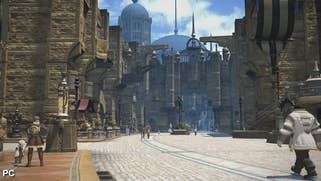

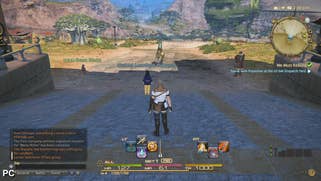
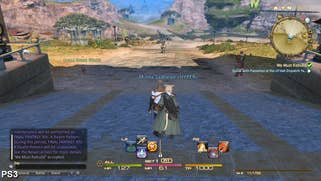
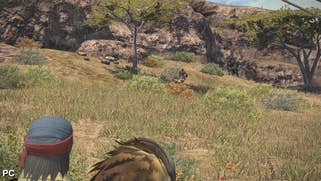
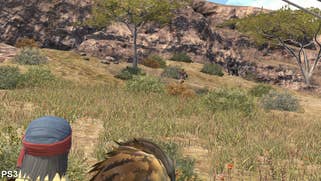
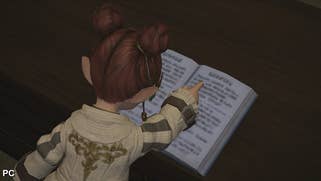
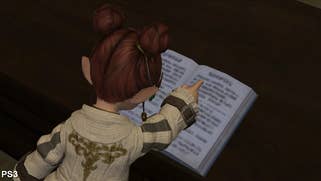
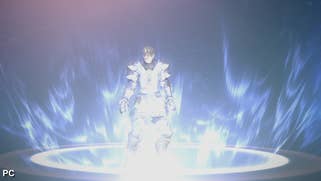
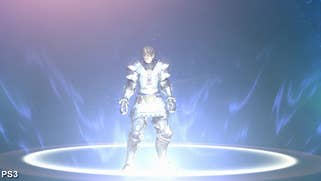
Unfortunately, this level of quality does not translate to the PlayStation 3, which is instead presented with a compromised rendition of this vision. In particular, the graphics are visibly blurrier and there is less fine detail on display, with some geometry edges appearing rather fuzzy in areas that feature more complex scenery. There appear to be two key reasons for this: firstly, the FXAA implementation on the PS3 is much less refined than on the PC, causing pixel-based artifacts to manifest around geometry edges, while at the same time also visibly smoothing over texture detail (although finely detailed structures and foliage tend to shimmer noticeably in both versions).
Secondly, we see the native framebuffer coming in at around 1152x640 before this is upscaled to 720p, which results in a rough Vaseline-like layer of blur across the visuals. Thankfully, the strong use of post process anti-aliasing means that jaggies are kept in check on the characters and chunkier parts of the environment.??
Beyond image quality concerns we also find extensive use of lower resolution textures and normal maps on the PS3 - along with a reduced amount of anisotropic filtering - which further softens the overall look of the game, leaving certain parts of the stylised artwork looking smudged and rather indistinct in comparison to the much cleaner PC version.
Polygon counts are also reduced on certain parts of the environment, and foliage too is rendered in a lower resolution giving these elements a slightly chunkier look. Elsewhere, and we see the usual drop in shadow quality on PS3 when compared to PC, along with the paring back of self-shadows on the environment and a reduction in alpha-based effects during magic attacks in order to save on memory usage and bandwidth.
But perhaps the biggest difference comes down to the use of streaming. Both versions use level of detail transitions (LOD) to manage scene complexity while working around the memory considerations of each system, but on the PS3 the use of LOD is far more aggressively implemented in order to maintain a similar level of detail up close as the PC game, and this results in some pretty horrible pop-up as objects are streamed in as the player approaches them.

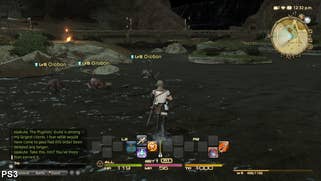
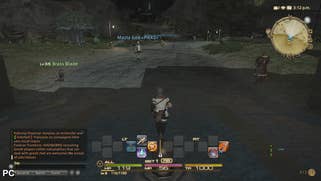



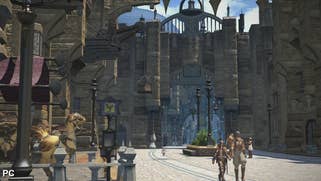
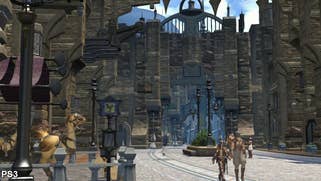
For the most part, the transitions between having objects appearing in view before shifting to higher quality assets are rather smooth: elements fade onto the screen rather than simply popping up in a jarring fashion, although the latter also happens quite frequently with regards to enemies and other characters. As such, environments look far more barren on the PS3, with buildings, trees, and most of the alpha-based greenery simply not present when gazing out into the distance.
In truth, most of this detail is only rendered a few feet away from the player due to the console's limited 256MB of video RAM in which to load assets - rather than being cut out completely - but it still makes the world feel less alive and more sparsely populated.??
The use of LOD also plays a large part in how areas of the game appear during nighttime conditions. The day/night cycle and weather dramatically change how locations are lit and shaded. A combination of pre-baked light maps and dynamic light sources is used to illuminate the environment and facilitate these transitions. Dynamic lights render from much shorter distances on the PS3, with areas far away from the player left partially in the shade while 'baked' light maps and textures are still drawn on screen. The use of both static and dynamic lighting also creates some jarring transitions between different conditions: textures and light maps are quickly swapped out during time of day and weather transitions to simulate street lamps and building lights turning on, before the regular cycle resumes.??
Interestingly, while the inclusion of dynamic weather and a day/night cycle certainly helps to make the world a more convincing place to explore and be a part of, the implementation in Final Fantasy 14 Online feels a little random: abrupt changes to the time of day often occur after leaving the main city, or after briefly entering a building and accepting a mission with no rhyme or reason as to why. On the other hand, it appears that the cycle is more firmly locked down once you have accepted a quest, with fewer instances of dramatic sweeps in lighting conditions beyond changes in the weather.??
"The only notable PC performance issue is that stuttering regularly occurs when exploring more detailed parts of the world, even when there are only a few other players present in the same area."
Compared to the original Final Fantasy 14 Online, A Realm Reborn appears graphically downgraded to an extent, resulting in less overall detail than before. Given that many people complained about performance issues with the previous game when running on high spec PCs, it seems like Square Enix has taken the approach of reducing visual complexity in an attempt to achieve smoother frame-rates on a range of hardware configurations. But characters still appear smooth and very well modelled, and the level of detail in the environments is generally excellent for a massively multiplayer title.??
In addition, due to the changes made with the new engine, the overall experience in A Realm Reborn is much smoother than in version 1.0 of Final Fantasy 14. Those with higher-end set-ups (like an Ivy Bridge Core i5 and GTX 680 - our test set-up) should have no trouble running the game at a near constant 60fps in resolutions at least as high as 1080p. The only notable issue is that stuttering regularly occurs when exploring more detailed parts of the world, even when there are only a few other players present in the same area. Throughout our time with the game we noticed that frame-rates appeared to be compromised more heavily when the servers filled to capacity and when there appeared to be changes in your connection rate.
However, these instances of performance drops are brief and are generally on par with what you expect to see in other massively multiplayer experiences - when dealing with hundreds of players and a complex open world, it's incredibly hard to maintain a stable update on a permanent basis, as there are so many variables involved.
PlayStation 3 performance analysis??
On the PlayStation 3 version of Final Fantasy 14: A Realm Reborn, we are faced with a far more grim state of affairs as the engine frequently struggles to handle the rendering load, despite the use of an aggressive LOD system and lower resolution assets in order to work around the memory and bandwidth constraints of the console.??
During combat is where the experience is most adversely affected - sustained drops down to 20fps are commonplace. Meanwhile, heavy action scenes that feature plenty of enemies and screen-filling alpha effects see things take a dive down below the 20fps mark, resulting in a jerky screen update and very heavy controls that make accurately repositioning the camera and moving your character around extremely difficult to achieve.
"On PS3, the engine frequently struggles to handle the rendering load, despite the use of an aggressive LOD system and lower resolution assets."
Elsewhere, things are smoother when traversing the environment, with the engine reaching highs of around 34fps at best in less complex locations, before settling at around 24-30fps for more prolonged periods. Essentially, Final Fantasy 14: A Realm Reborn runs with an uncapped frame-rate and with v-sync firmly enabled - as such, we see the odd spikes above 30fps and zero screen tearing, but also plenty of extended drops well below as the GPU stalls in rendering a full frame in time for the next refresh.
Interfacing with Final Fantasy 14
It's no secret that Final Fantasy 14 was originally designed for the PC, before a PS3 version became a serious consideration, with a multitude of configurable options available. With various maps, character customisation screens, and a chat window, there are too many features to cram into a console interface without streamlining how all of this information is accessed.
For A Realm Reborn, Square Enix has created two distinct control options: one designed around using mouse and keyboard controls on the PC, and another based around using a controller.? On PC, the main mouse and keyboard option is set up around using point and click widgets to access various features, such as the map screens, chat bar, and action bar, which are both fast and easy to use.
Macros can also be manually created by the player when using the action bar, thus allowing for complex moves to be performed without the need for various clicks and button presses. It is also possible to utilise the 360 pad on the PC to control characters and the camera with the analogue sticks, along with a combination of triggers and face buttons to use the action bar. This can be combined with a mouse and keyboard set-up for easy navigation of menus and use of the chat window, which perhaps provides the best of both worlds for those who primarily favour playing on a pad.
"Two distinct control options take advantage of the input method available on both platforms: one designed around using mouse and keyboard controls on the PC, and another based around using a controller."
Naturally, on PS3, everything is handled on the Dual Shock 3 controller, with the option of adding a keyboard. On-screen options - such as the chat window and maps - are cycled through using the select button, while pressing start brings up an extended menu that functions like the PS3's own Cross Media Bar (XMB). This contains options for viewing the map, changing button config, sound options, and various other features. Meanwhile, attacks and abilities are mapped to the triggers and face buttons.
While combat is both simple and intuitive, having to cycle through various HUD features in order to select a specific option is a slow and cumbersome process. The inclusion of the XMB menu makes this easier, but the system still adds a layer of frustration to the gameplay compared to the dual gamepad/mouse and keyboard set-up available on PC.
Final Fantasy 14: the Digital Foundry verdict
Salvaged from the travesty that was Final Fantasy 14 Online, it's remarkable that Square Enix has managed to turn things around within a relatively short two-year period, in that time completely reworking the core of the game and redesigning it to be more like a traditional MMORPG. While many of the experimental ideas have been dropped entirely from A Realm Reborn, making it harder for it to stand out in the crowded MMO space, the decision is arguably the right one, with the end result a solid example of an online Final Fantasy title despite there still being a few issues in need of correcting - the navigation system could do with improvement, while some of the story missions are bland and completely forgettable.
But when all is said and done Final Fantasy 14 Online: A Realm Reborn manages to be a success. In terms of multi-platform accomplishment, unfortunately there's a distinct sense that the world in Final Fantasy 14 Online is a bit too much for the PS3 to handle, with aggressive LOD streaming and poor frame-rates having a negative impact on what is an enjoyable and well-designed massively multiplayer experience. We're still looking at a great MMO based around Square Enix's excellent artwork and much-loved Final Fantasy characters, but the end result isn't quite as polished as we'd hoped it would be.
In that respect, Final Fantasy 14 Online: A Realm Reborn is a game that benefits from the additional power offered up by today's gaming PCs. The smooth frame-rates make the game far more enjoyable to play, while the clearer and more detailed visuals help to bring the environments to life. On top of that, the flexibility that the combined game pad and mouse and keyboard support provides simply cannot be matched with a Dual Shock 3 controller alone.??
"But what of the PlayStation 4 version currently in development? Apparently it's running at 1080p60, based on the PC version running at the highest settings."
But what about the PlayStation 4 release due later this year? The word from Square Enix is that the development team is targeting a native 1080p resolution and a 60fps frame-rate, using the PC game running at the highest settings as a base for the next-generation edition. And from what we've seen so far, there certainly appears to be more than enough power on tap to do so, given that Final Fantasy 14 doesn't appear to be pushing anything close to what various next-generation titles are achieving in terms of lighting, particle physics, shader effects, and the sheer level of detail on offer.
A more interesting prospect is how Square Enix might take advantage of the Dual Shock 4 controller to further improve the game interface. Sure enough, the existing system is functional, but there is clearly room for refinements to be made. In particular, the Dual Shock 4's touch pad could be used to provide a viable alternative to a mouse on the PC.??
But for now our recommendation rests with the PC version, which at this point in time is the definitive release of Final Fantasy 14. Smoother and easier to play, it should be your first choice. The PS3 version still delivers a worthwhile experience, but the more convoluted control scheme and poor performance frequently distract from the action. While it is still worth picking up for those without access to a decent gaming PC, if you're planning on getting a PS4 later this year, it might be worth holding out for that version instead.
